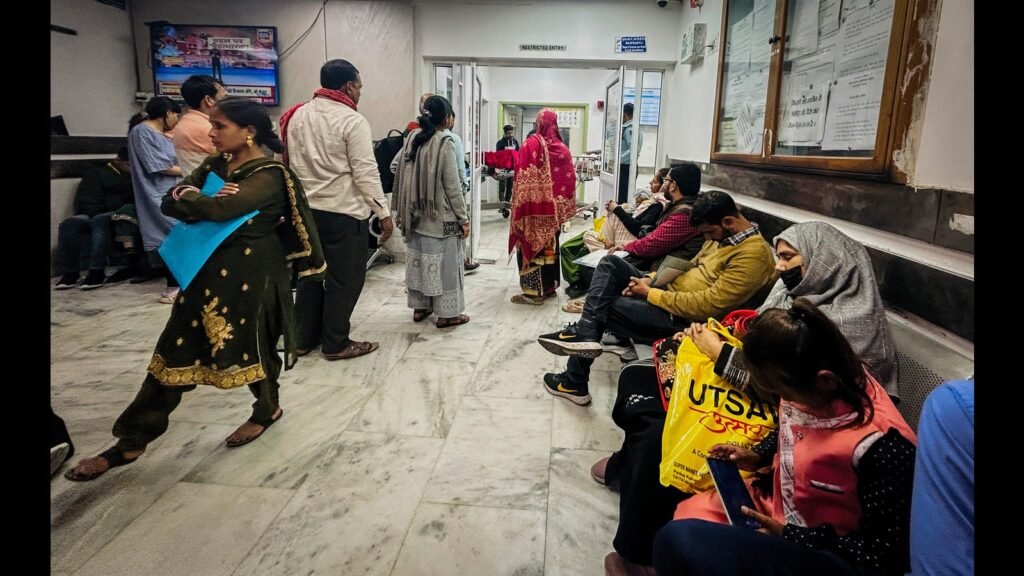
Murders usually stoke a rush of sympathy for the victim and her/his family, as it should. But the murder of Brian Thompson, CEO of UnitedHealthcare, on a New York street on December 4, 2024, instead brought to the surface the simmering public anger against insurance firms which “deny, defend and deposit” as a strategy to avoid claims to earn. higher profits. In fact, these words were found on the bullet casings used by the assailant who has now been caught.

Thomson led the largest health insurance firm in the US (data from tinyurl.com/mrnszwj8) with 2023 revenues of almost $360 billion. Other than being the largest company, it is also known as the one with the highest claim denials, denying, as per ValuePenguin, 32% of all claims whereas the best company denied just 7% (data from tinyurl.com/dp74kw6a). Social media comments played on standard responses in customer care when one tries to reach a health insurance firm, with one person tweeting: “I submitted a claim for my condolences but it was denied”. However, no amount of public anger, misplaced or otherwise, can ever justify the murder or the criminal intent behind it.
Closer home, data on health insurance claims in the Indian market has also put the issue center stage. Data for 2023 from the Insurance Brokers Association of India (IBAI) shows some worrying claim trends for health insurance (report here: tinyurl.com/42mydkc8There are two main inferences from the data. First, the public sector firms are far more consumer-friendly in terms of their claims record than private sector firms. Worse, a few private health insurers have very poor claims behaviour. All four PSU firms paid more than 70% of the amount claimed, with New India paying 98.74% of the amount claimed and Oriental Insurance paying 97.35%. Four private sector firms have ratios above 80%, with SBI General paying the highest in the private sector at 88.30% of the amount claimed. Eleven private sector firms paid less than 70% of the amount claimed, with Star Health right at the bottom with just 54.61% of the amount claimed paid.
The second is that it seems some firms are playing with reporting standards to look better than they are. There are two metrics in the IBAI data: claims by the number of policies and claims by the amount paid. Take the case of Star Health for example. It pays a healthy 75.10% of claims by number of policies, but a very poor 54.61% by amount. This could point to a firm paying off the lower value claims without a deny, delay, and deposit playbook to get the claims number up, but dragging their heels when it comes to higher value claims. It could also point to fine print in policies that allow firms to get away with lower claim amounts. For example, a sub-limit on room rent will restrict what the policy pays out if the room rent is higher during the hospitalisation.
The data points to the fact that the insurance regulator, the Insurance Regulatory and Development Authority of India (IRDAI) is unable to get all health insurers to play fair with the customers. Health insurance is a business where the claims amount should not be higher than the premiums gathered by an insurance company as that will lead to insolvency of the firm. Similarly, a claims ratio of lower than 60% points to consumer gouging that will trigger mandatory refunds to policyholders in the United States (US). But India does not have such a regulation in place. Worse, despite having such poor claims ratios, firms are allowed to rack up premiums year after year.
Insurance companies point to fraud as one of the reasons for denying claims. While frauds are a real problem, possibly the worst-performing ones can learn from the better-performing ones on how to deal with fraud. As a first step, IRDAI must ask insurers to disclose their claims ratio in amount (and not the number of policies) for each policy sold at the point of sale. They need to reach out to their existing customers with the latest claim number. Customers should be allowed to port their policies to another insurer that displays a better claims experience. IRDAI must not get bullied into the threat of insolvency that insurance firms routinely use when the regulator presses the consumer protection pedal just a bit. This is an old trick of the financial sector that banks have previously used to keep costs high and service standards low. Both life and health firms use the same threat of if-you-push-me-too-hard-I-will-roll-over-and-die. The threat is that policyholders will be hurt and a failure can trigger a larger crisis. IRDAI can counter it by revoking the license and enforcing a ban on business for a decade rather than blink.
But there is a deeper problem to be solved that is beyond IRDAI. Health insurance is a contract between three parties — the policyholder, the insurance company, and the hospital. The hospital is an unregulated entity with no caps on costs in this equation. That many hospitals perform surgeries that are not needed is a well-known fact, as is the experience of being overcharged. During the Covid-19 pandemic, one health insurance analyst shared that some hospitals were billing each customer for the hazmat suit the doctor and nurses wore, while they wore the same suit for all the patients. But if there were 50 patients, the hospital billed the same suit 50 times.
While insurance firms and hospitals have the legal and operational muscle to deal with each other, the patient and policyholder suffer a double hit. Government hospitals are mostly dysfunctional with some notable exceptions and private health care is expensive. But when hospitals overcharge and insurance firms do not pay, there is nowhere the patient and policyholder can turn to. They will cut consumption, dip into their savings or take loans. All of which, at a macro level, are bad for the health of the economy. The government needs to form a task force to think through the problem with an integral approach rather than deal with it in the silos of the health and finance ministries.
Monika Halan is the best-selling author of the Let’s Talk series of books on money. The views expressed are personal




